A new east London workspace balances professional function with a residential feel, designed with a strong focus on material reuse and environmental responsibility
THISS Studio has completed the interior fit-out of a flexible office and creative space in east London for independent communications studio SALT. The space was designed for both work and events, with an emphasis on reuse principles and natural materials.
Moving into a space of their own for the first time, the team sought a light, welcoming workspace that could transition easily from a day-to-day office to a hireable venue for talks, events and photography shoots.
Accessed via its own private courtyard, the HQ is located at the end of a quiet cul-de-sac within a private building complex of other creative offices in Shoreditch. On first viewing, the team was struck by the volume of the space, with its high ceilings, characterful steel beams and columns, and ample natural light from two elevations of industrial windows – an existing shell with clear potential.
A new spatial plan was commissioned to create a highly flexible, open layout while introducing gentle zoning to support the needs of the business: dedicated working areas, ample storage and a space for meetings and daily team lunches.
In addition, THISS Studio was tasked with designing key furniture pieces for the office. The brief aimed to create a space that felt warm and approachable. The project prioritised reusing as much existing material as possible to reduce both waste and cost. The fit-out aimed to reduce reliance on wasteful commercial office practices and mass-produced, low-cost furniture by incorporating onsite materials, construction waste, secondhand pieces and natural finishes.
Moving into a space of their own for the first time, the team sought a light, welcoming workspace
Carcasses from the existing double run kitchen were reused and half were moved to the rear wall to create additional storage, with only two extra cabinets required. The old cupboard doors were rehomed on Gumtree and replaced with chocolate Valchromat sheeting treated with raw Osmo oil. The old kitchen sink was also given away online, now in use at a joinery workshop in south London. Only the previous chipboard kitchen worktop could not be repurposed due to rot. Thin steel sheets were added in the kitchen to enhance durability and subtly reflect light.
All furniture is either second-hand or made from reclaimed materials, centred around two expansive tables of cork and timber trim that define the studio layout. The largest at 3.6m long functions as the team’s shared desk, with the capacity to seat eight people. The second 2.3m table is used for meetings and daily lunches. The tables are built from three retired steel catering tables, purchased from eBay for £100 each, with the legs cut down to size and placed on casters for easy rearranging. The cork and oak worktop sits atop the steel base, resembling a lid. Both materials are remnants from previous renovation projects and saved from landfill.
To make the most of the daylight while maintaining the inherent flexibility of the open layout, the office has no fixed meeting room. Instead, adaptable interventions establish soft thresholds and define key areas. A large patchwork linen curtain, crafted by Georgia Bosson, is made from end-of-roll linen sourced from an Irish mill. Attached to the central steel beam with C-clamps for easy demounting, the curtain can be drawn across to divide the space as needed. The half wave curtain introduces a softer material texture to the space and improves the acoustic quality within the open plan room.
Out-of-use stainless steel butcher’s shelves were salvaged from Gumtree and repurposed as bookcases, acting as dividers providing separation from the bathroom. Steel sheets were introduced sparingly for worktops and joinery surfaces, emphasising material restraint, and adding cohesion between the steel table legs and shelving. The steel columns and beams, previously painted black, were recoated in a rust tone using sustainable paint from Bleo. The floors were sanded back and finished with a natural, matte varnish to preserve and celebrate the timber’s original character.
The team noted that working with strict material reuse required adapting the design to what was available. Designing in this way required a flexible vision, as well as time and patience for sourcing and a little bit of good luck.
Downloads
THISS Studio London SALT HQ Drawing
PDF, Size 0.13 mb


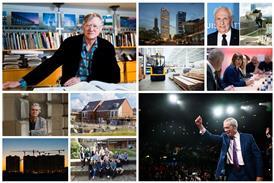
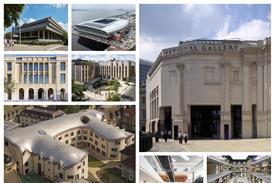





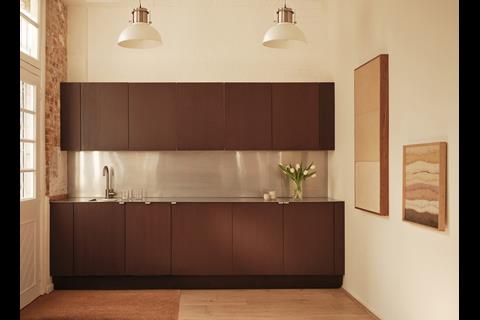
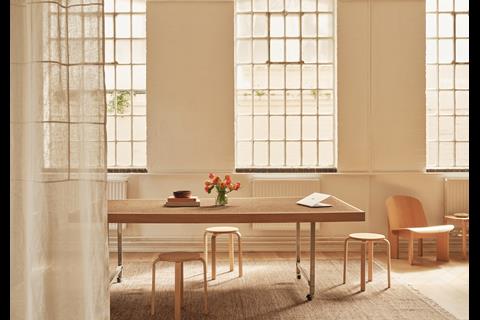
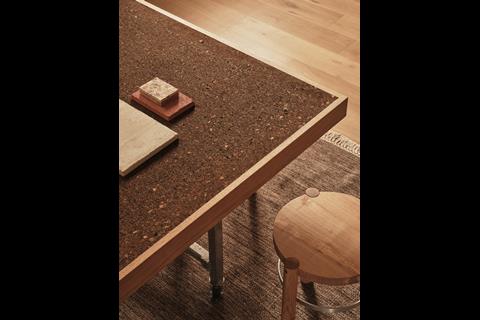
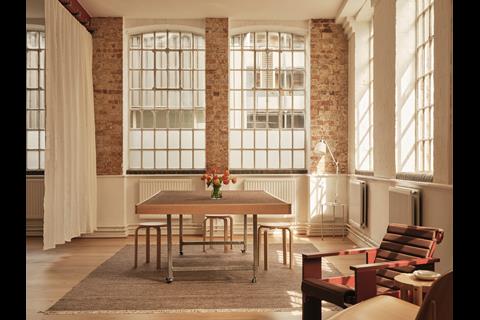
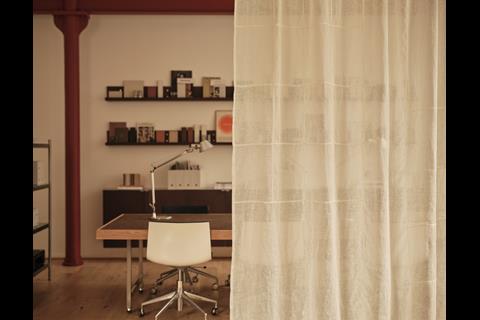
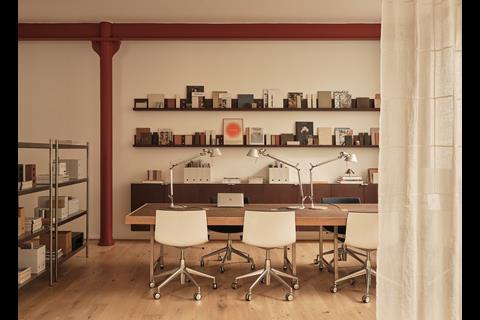
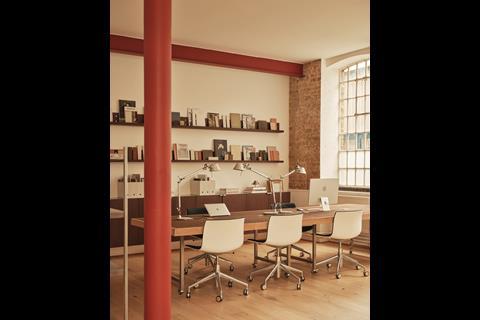
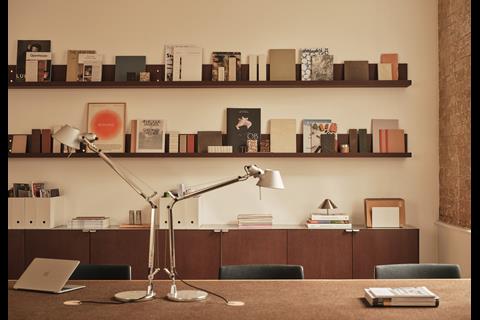
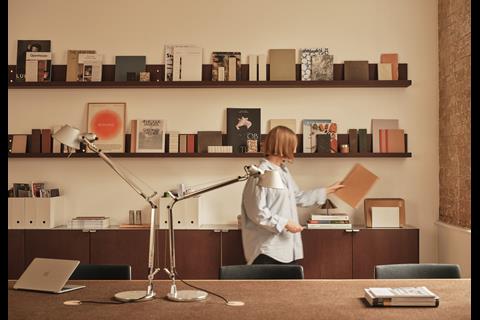
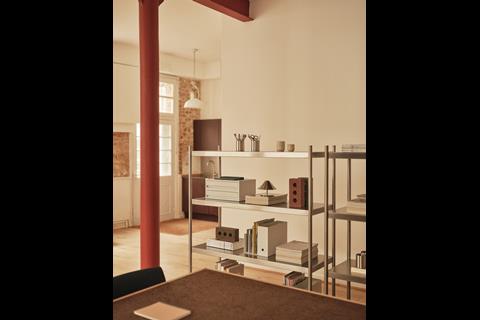
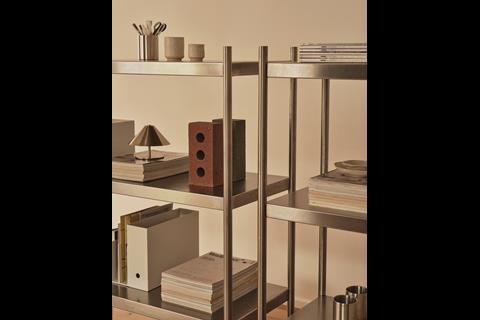
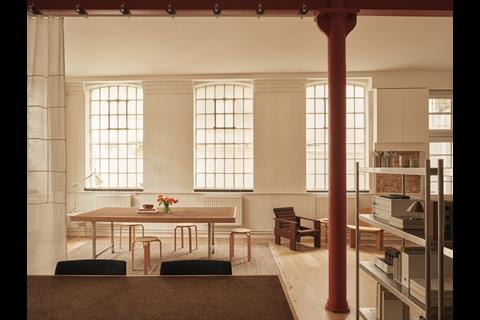
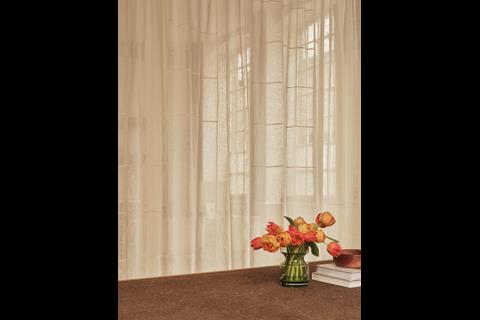







No comments yet